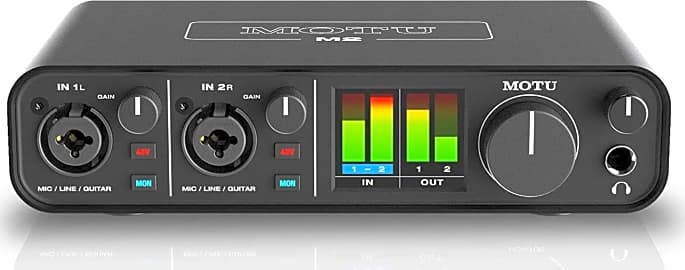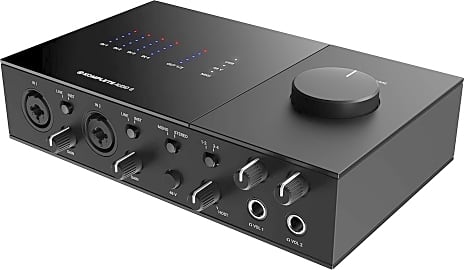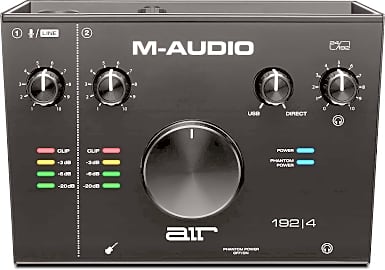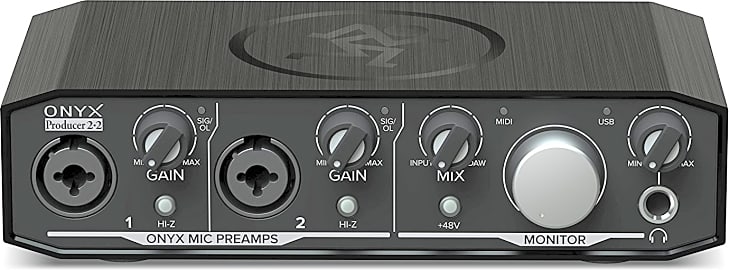The 10 Best USB Audio Interfaces

This wiki has been updated 38 times since it was first published in April of 2015. If you want to send high quality audio to your computer, you'll need one of these USB interfaces. They are an essential piece of equipment for anyone recording instruments, vocals, voice-overs, or podcasts, and can be an integral part of your live performance setup, too. We've ranked some of the best by their signal quality, versatility, durability, and value for money. When users buy our independently chosen editorial picks, we may earn commissions to help fund the Wiki.
Editor's Notes
July 21, 2020:
Depending on whether you're using an interface for podcasts, music, or something else entirely, you're going to find different models will be more suitable to your needs than others. For example, a newcomer to our ranking, the Rode Rodecaster Pro, might be the best USB mixer for podcasting, as it has a set of programmable effects pads that you can load up with things like intros, outros, and advertisements. It's also ideal for taking phone calls and not losing any quality, as it has a direct phone input. That model is the only offering on our list with actual faders, though, as we have another list dedicated to USB mixers.
The Focusrite Scarlett 18i20 remains one of the most reliable offerings out there, especially for producers looking to integrate with software and plug-ins simultaneously. Its 24-bit audio is certainly high-quality, but it's bested by the 32-bit offering coming from Steinberg Audio UR816C 16x16, which would have risen higher in our ranks if it had segmented LED metering that could show you where your levels were at as you get ready to record.
There are also portable options for use in the field, so users can tape interviews or record performances in small spaces like coffee houses. The best of these take their power over the same USB connections they use to send their audio to your computer, so you won't need to hunt for an outlet or be tethered to a certain spot for your setup.
May 09, 2019:
From basement producers to touring bands, all sorts of musicians and sound techs have different requirements when they go out in search of an audio interface. A singer/songwriter on a budget will likely find the Steinberg UR12, with its one mic input and another Hi-Z guitar input, to be a great option that'll suit their needs. The Mackie Onyx Producer falls in this boat, as well.
However, for a live performance setting where multiple inputs and outputs are needed, the aforementioned options fall short. The same goes for serious producers who are looking to equip their studio with a unit capable of tracking multiple inputs at once. Our top 4 options handle these requirements well, whereas our lower-ranked options tend to suit the more minimal needs of hobbyists and amateur producers.
Special Honors
Antelope Discrete 8 If your commercial facility is looking for an upgrade, or if you're willing to invest big bucks into your home studio, this is a model to consider. A nifty feature that may be useful to an engineer overseeing multiple levels during a live show or recording session is that each musician can adjust their own headphone volumes on their phones by using an app. antelopeaudio.com
Mectric Halo ULN8 Considered amongst some to be the holy grail of USB interfaces, both for use in the studio or on the road, the Metric Halo ULN8 features boutique-quality mic preamps, standalone capability, comprehensive precision metering with hi-res 15-step meters, world-class converters, and much more. Further, it's lightweight, rugged, and only takes up one rack space. mhsecure.com
History Of The Audio Interface
Phonographs found their most prominent use in the realm of music.
The history of recorded sound goes as far back as 1860, with the phonautograms created by Édouard-Léon Scott. The sounds created by these machines are generally unrecognizable, though the machines themselves lit a spark in the imaginations of many to follow.
In 1877, Thomas Edison's cylinder phonograph was invented. The original phonographs would play dictation which had been inscribed into a wax cylinder. Though once thought to replace the need for stenographers, this idea was met by immense opposition and quickly disregarded. Phonographs found their most prominent use in the realm of music. In 1878, the first music was put on a record. It was Jules Levy playing "Yankee Doodle". By 1901, the phonograph was being mass produced and garnering much interest throughout the world.
The phonograph gave way to the record player in 1913. Though the record player struggled to stay alive as the radio was invented, it remains a steadfast audio standard to this day.
The need for a personal audio interface really began with the boom in popular music played over the radio. Hearing artists like Elvis Presley and The Beatles played heavily on the radio inspired hopeful musicians across the world. In the 1950s and 60s, the idea of creating a professional sound from anywhere but the recording studio was obscene. The best one could hope for was a reel-to-reel recorder. These early tape recorders allowed users one take to record themselves onto a reel in low quality.
The first home studios came about in the 1970s. Reel-to-reel technology had improved enough to offer multiple takes and slightly better sound quality. The first preamplifiers were introduced, expanding the horizons of home recording. The 1980s brought an explosion of possibilities with the invention of MIDI. This expanded the capabilities of a band's keyboard player and was one of the first steps in music going digital.
Audio interfaces of some kind have since been used in every professional recording created.
Purchasing Options
When considering the purchase of a USB audio interface, one should pay attention to the benefits and functions of the options available.
The user's level of experience will be an important factor to consider. Is the person who will be using the interface relatively skilled in sound engineering, or are they a novice? Some models require more extensive knowledge of audio engineering than others.
This can make for a high-quality input file, and less editing in post production.
Is the interface equipped with the proper inputs to handle the user's needs? Some audio interfaces excel at recording with condenser microphones, while others are incompatible. If the interface will be used for both microphones and instruments simultaneously, it is important that multiple XLR and 1/4 inch jacks are present. Also consider if the audio interface will be used for MIDI, tablet computers, or line level inputs. Some musicians rely on these inputs, and will need an audio interface that can handle them.
Will the interface be used to record multiple artists at once? Many personal audio interfaces are made to ideally record one instrument and one microphone at a time. If a band is to be recorded on a simple audio interface such as this, multiple takes of the same song must be played to properly record every member.
Another important factor to consider is how much control the user would like to have before the sound wave enters the computer. Some models offer control of input gain and EQ changes before the sound reaches the computer. This can make for a high-quality input file, and less editing in post production.
How Audio Interfaces Influence Music
The invention of the long playing record created a large shift in music. It was possible to hear an entire album or performance without being present to the live show or recording. This took early big band crooners such as Frank Sinatra to new heights of popularity, effectively creating pop music.
By repeatedly playing their music on the radio and popularizing their personas, the companies could sell records at unbelievable rates.
Beginning in the 1950s, the music industry really became big business. Record giants such as RCA and Columbia began signing and preening talented musicians. By repeatedly playing their music on the radio and popularizing their personas, the companies could sell records at unbelievable rates. This is how the pop-star culture was born.
The pattern continued for decades, with the majority of radio play being dominated by a handful of large record companies. These companies drove the musical journey of the consumer, highly influencing the listening and purchasing habits of the world's population.
This trend began to change in the 21st century thanks in part to the audio interface. These personal interfaces allowed talented musicians from around the world to create professional music using their home computer. The artist could then distribute the music to listeners, without a record company, via the internet. This practice continues to this day, inspiring countless artists who remain relatively unknown on the radio waves, yet enjoy a large following on the internet.















